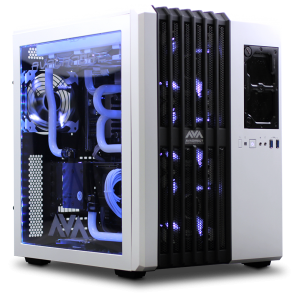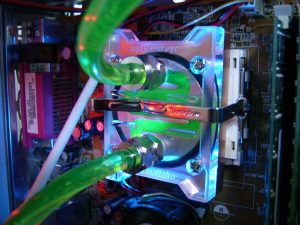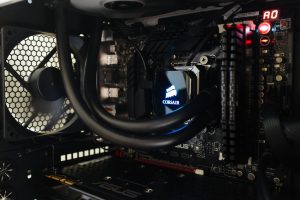Liquid Cooling and What You Need to Know!
Educating end users to help prevent most problems.
Are you thinking about getting a liquid cooled computer? You may want to do research before you spend your hard earned money. Our technicians work on a lot of computers, and we mean a lot! We have at least one liquid cooled system per week come in for service. A majority of the time we hear, “it just stopped working and I don’t know why”. Now this isn’t every machine and not all the time is it a cooling problem. Most of the issues we see with liquid cooling is the pump dies or even the liquid coagulates making it to thick to be pumped.
Most people think “well it’s a closed system and it should just work”. Everything mechanical will break at some point, and now we are introducing heat into the equation. Heat is our enemy in the computer world. It is the goal of all cooling systems to remove and dissipate the heat from the components so that the system will run cooler and faster. All liquid cooling systems have the same basic components, a liquid block better known as a “water block”, a pump, hoses, a radiator and fans.
The idea is simple, pump cool liquid through the liquid block and remove the heat efficiently as possible by blowing air across the radiator with fans. Some systems work better than others. There really is science behind liquid cooling systems. The size of the radiator, the viscosity of the liquid, how fast the pump is moving the fluid and how fast air is blown through the radiator all matter.
A mass majority of consumers believe that the system will run cooler by liquid cooling it. In most cases no, it’s just not possible. The one problem most people don’t think of is, you cannot cool the liquid any cooler than the ambient temperature of the room you are in. The other problem is after you pump the liquid through the radiator to cool it off it still retains some heat when it returns to the liquid block. The exception to this is a liquid chiller system, which are very expensive and need maintaining.
The idea behind a liquid cooling system is great, but the down side is that they have more parts and more points of failure. We have seen many horrors and heartaches over the years. Systems have leaked, destroying video card, motherboard and power supply. Pumps have burnt up allowing the processor to get too hot and the system never runs right again. Our technicians have even opened a few sealed systems to investigate the aftermath and found all the liquid turned to gel!
These are just some failures and not everyone has problems, we have had many people happy with their liquid cooling systems and have never needed to be repaired. Keep in mind that a failure is always possible and be prepared to make costly repairs if it does occur. When you use a standard heatsink and fan the system most likely will not encounter damage by the fan failing or even the heatsink being clogged with dust. All in all the best thing you can do is keep your computer clean and remember heat is your enemy!


